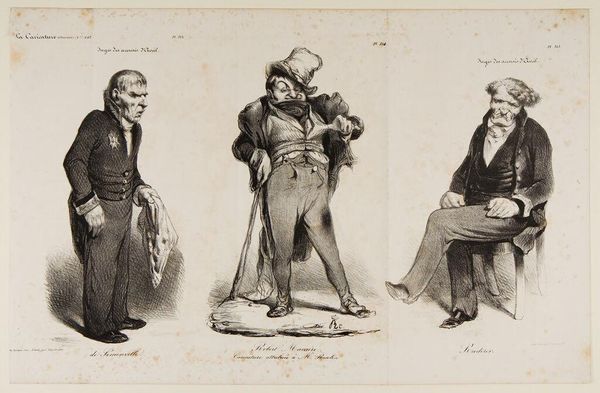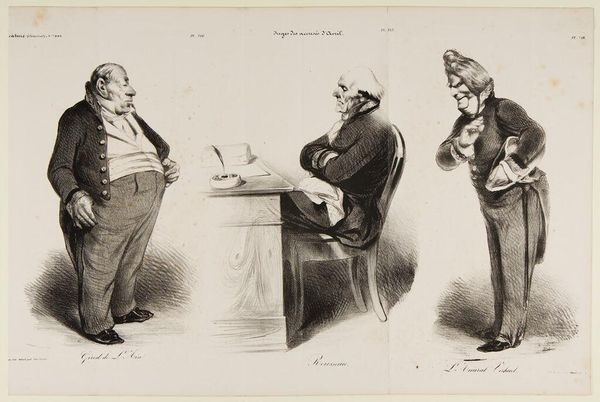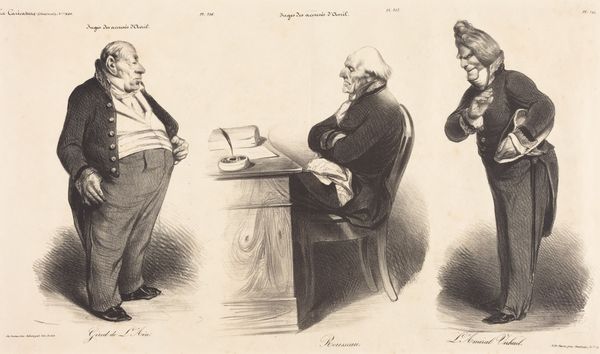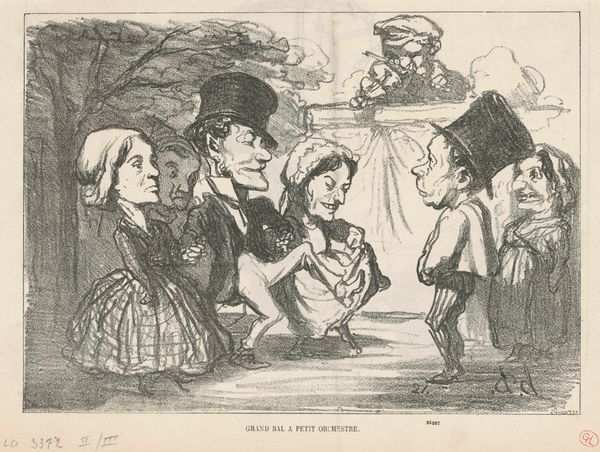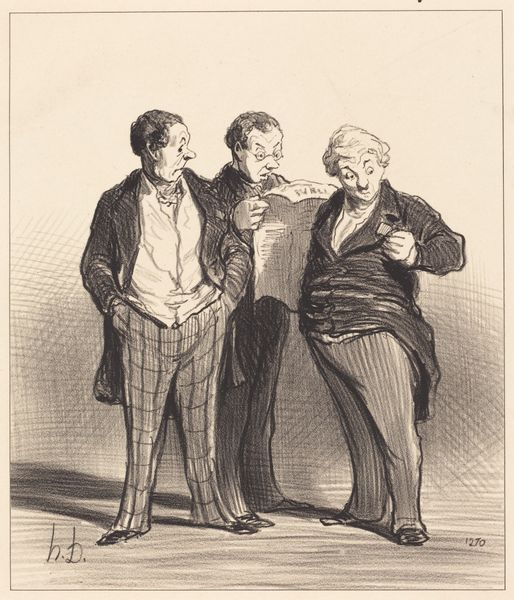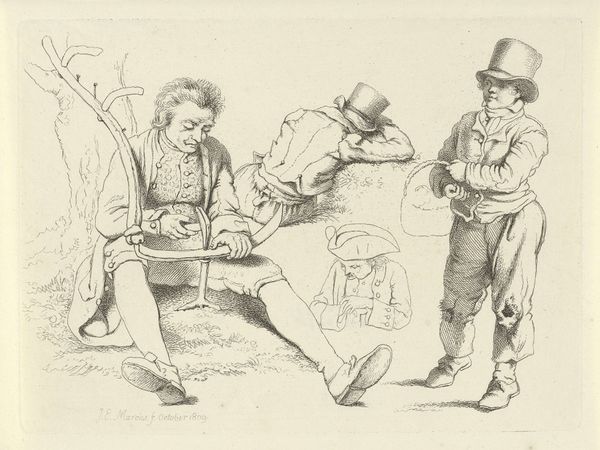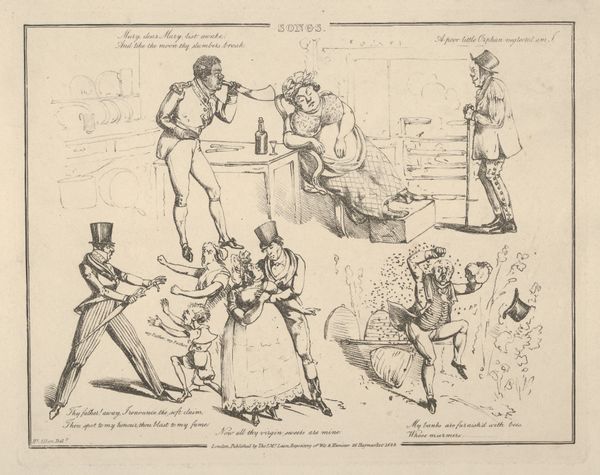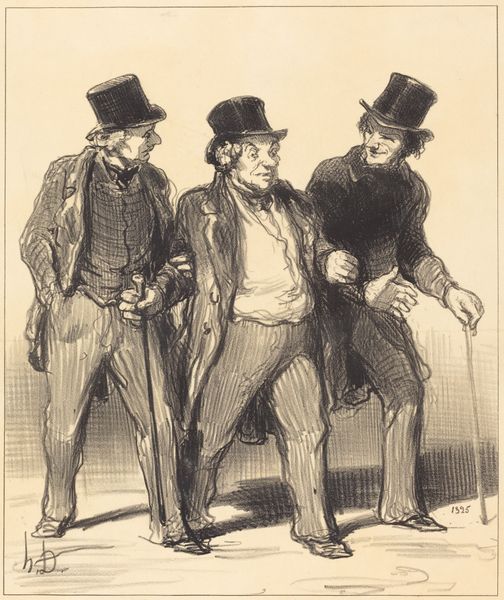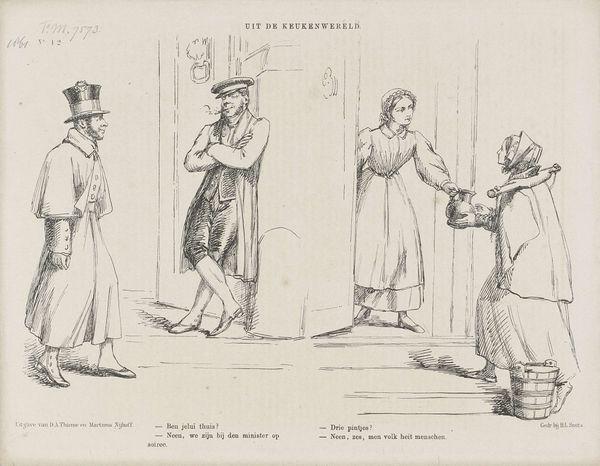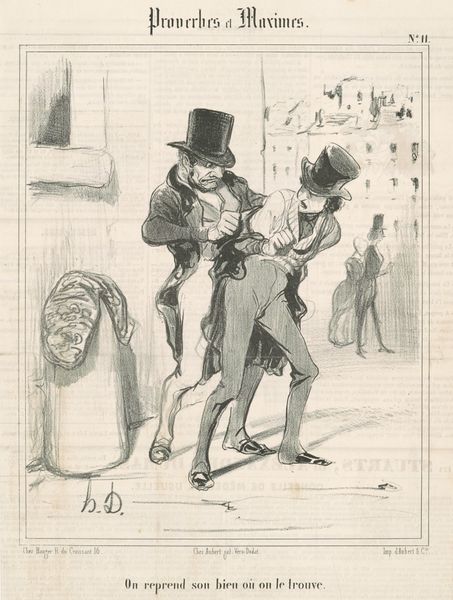
Huguet de Sémonville - Robert Macaire (Thiers) - Comte Roederer 1835
0:00
0:00
lithograph, print
#
lithograph
# print
#
caricature
#
portrait reference
#
pencil drawing
#
romanticism
#
genre-painting
#
graphite
#
realism
Copyright: National Gallery of Art: CC0 1.0
Curator: Here we have Honoré Daumier's lithograph, "Huguet de Sémonville - Robert Macaire (Thiers) - Comte Roederer", created in 1835. Three portraits, each rendered with remarkable...intensity. Editor: They're hideous, but wonderfully so! There’s an almost grotesque exaggeration of their features. You immediately sense a critical, almost mocking gaze on the artist's part. Curator: Precisely. Daumier used the lithographic process to mass-produce these images. This allowed him to circulate his pointed social commentary broadly. Consider the societal implications of accessible, biting satire! Editor: And the materials! The greasy crayon on stone, allowing for those deep blacks and subtle shading – a cost-effective means to undermine the elites. Notice how Daumier amplifies existing class anxieties by distorting familiar images of the ruling class? Curator: Absolutely. Each exaggerated physiognomy points towards perceived character flaws. But it also brings into question the very institutions that uphold their power – the press, the monarchy, even the Salon system, challenged through prints sold on the street. Editor: It's fascinating how these caricatures then enter into public discourse. They are reproducible images shaped by Daumier’s own material reality, his labor, and ultimately impacting political consciousness on the street level. Curator: A pertinent point. This work showcases not only Daumier's artistry but his acute understanding of the role images play in shaping political opinion, and indeed, the production and circulation of art as tools in their own right. Editor: Looking closely, I feel a grim satisfaction understanding Daumier as an artist challenging structures of power that defined the society in which he labored. Curator: Indeed. This piece exemplifies the power of art to act as a historical document, capturing and commenting on social and political dynamics with remarkable immediacy.
Comments
No comments
Be the first to comment and join the conversation on the ultimate creative platform.
